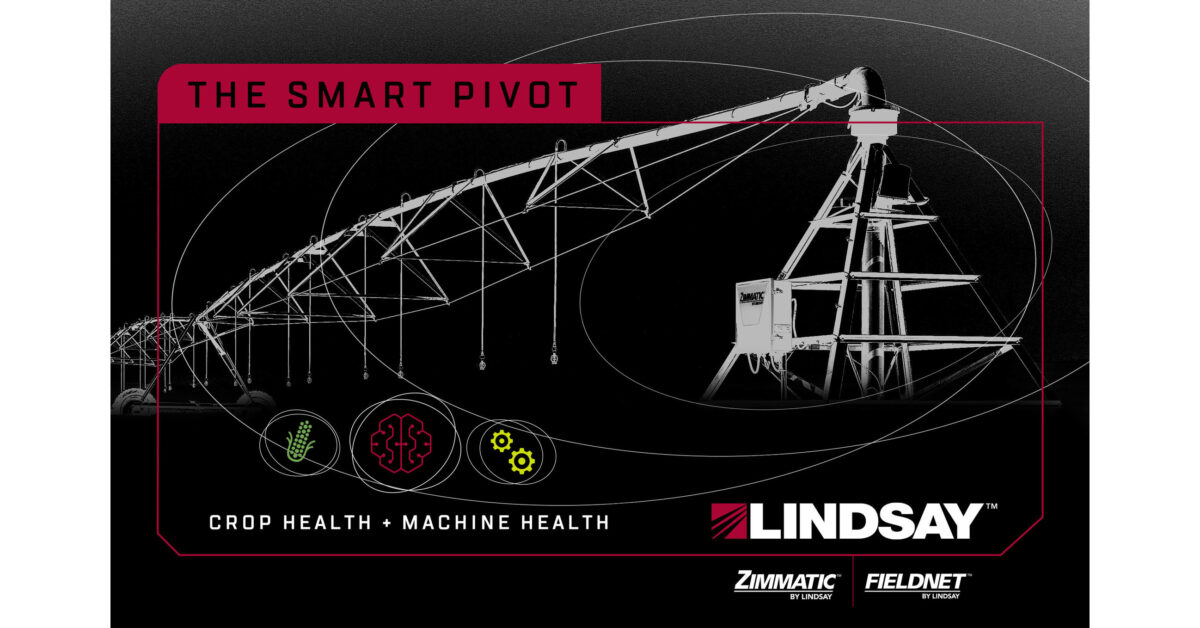Driving across parts of the Midwest or flying over some Western states, observers are likely to see plenty of circular crop fields with irrigation equipment installed on them. Many of these are center pivot irrigation systems, and their role has grown in importance for agriculture over the past decade or so.
That’s the view from Reece Andrews, Product Manager, FieldNET and Zimmatic Controls for Lindsay Corp., Omaha, NE, as the needs of today’s grower-customer have adapted to the changing environmental climate. “Center pivot irrigation is important, because getting the water where it needs to be is critical for farm operations,” Andrews says.
To appreciate how the center pivot irrigation marketplace has changed, it’s helpful to look back at some history. As Andrews points out, agriculture’s reliance on irrigation goes back decades, with the same goal driving development. “In farming, your land either has access to water or not,” he says. “If not, you as a grower had to figure out a way to get water to your crops. Back in the day, many growers used flood irrigation to do this, slowly flooding one field and then channeling that water to another field, and so on, using such equipment as syphon tubes or gated pipes. But this was not very efficient, with a lot of water wasted along the way.”
Instead, many growers began looking for a way to better control water usage in their fields. This led to the introduction of center pivot irrigation systems. Soon, center pivot irrigation systems were a common sight in crop fields across such states as Idaho, Indiana, and, of course, Nebraska. “These are places where rainfall tends to come in bunches during the early parts of the year,” Andrews says. “But there isn’t much rain in these areas during a typical growing season, so center pivot irrigation offers an answer to this problem.”
Ceres Imaging has released a new irrigation optimization product solution, strategically positioned to help growers make precision irrigation easier and more efficient. The new irrigation optimization solution integrates soil moisture sensors and other in field data with Ceres’ imagery.
“Especially when water’s scarce, optimizing irrigation depends on seeing the full picture of variability across your operation. But while you might want to have eyes on every plant in the field, the fact is, there’s never enough time in the day,” stated Ashwin Madgavkar, CEO and founder at Ceres Imaging. “This integration helps ensure growers get the full picture of their irrigation performance so they can optimize water use and hit their management goals.”

Why does this matter? Integration between different technologies is the next step of the precision irrigation evolution. Irrigation optimization from Ceres provides a powerful solution to optimize limited water sources in times of drought.
Key benefits that Irrigation Optimization provides growers:
- Make better decisions to improve uniformity and put water where it’s needed most.
- Make daily irrigation decisions easier and faster by seeing sensor information and imagery all in one place.
- Understand where you can cut back on water by using water demand maps by Ceres.
How it works: Imagery provides precise data about the health of crops across your operation. Sensors help growers see constant, real-time data for a single location of their farm.
Seeing your in field sensor data and imagery together shows the full picture of your irrigation strategy, from application to its impact on your crop. Growers can now use Ceres Imaging’s sensor integrations to better understand the water applied to fields and spot issues, errors, and discrepancies faster, putting precious time back in their day.
“The Growing Importance of Center Pivot Irrigation in Today’s Agriculture.”

